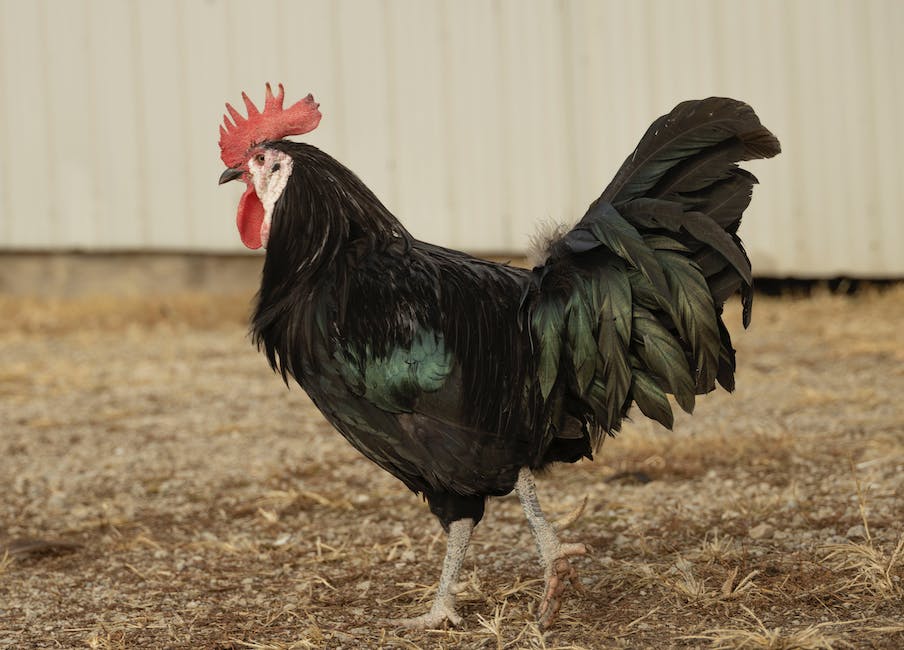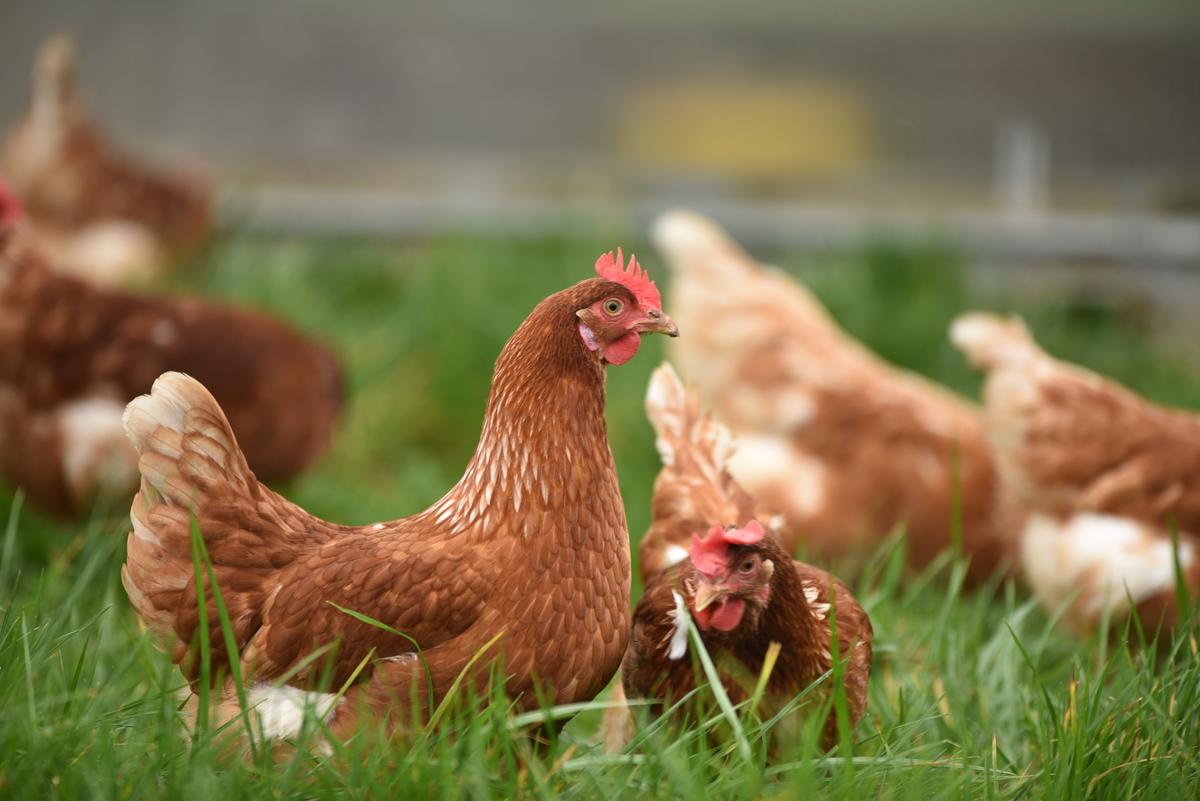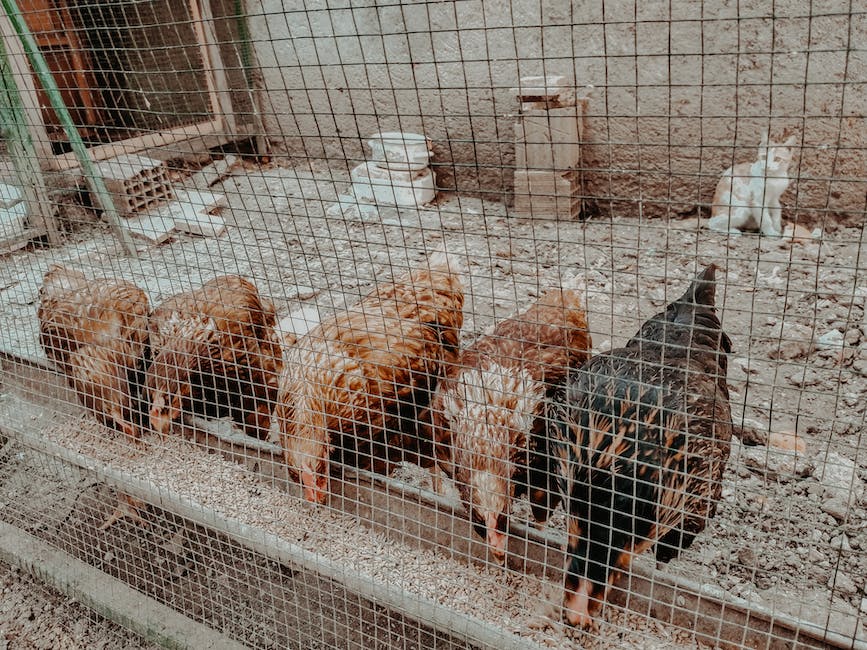We will receive a commission if you make a purchase through our affiliate link at no extra cost to you. Please read our disclosure policy for more information.
Raising chickens is an endeavor that combines practicality with pleasure. For many, it is not just about having an accessible source of fresh eggs, but also about experiencing the idiosyncrasies of these fascinating creatures and their resilient nature. Whether meant for a suburban backyard or a sprawling farm, your ultimate guide to Raising chickens successfully aims to equip you with the knowledge necessary to choose the breed that meets your specific needs, create an environment conducive to chicken growth, understand proper health care measures, and decode their intricate social behaviors.
We will receive a commission if you make a purchase through our affiliate link at no extra cost to you. Please read our disclosure policy for more information.
This journey into the world of poultry raising is both enlightening and rewarding and is sure to kindle a renewed affection for these inherently social animals.
Choosing the Right Chickens
Selecting the appropriate breed of chickens is an essential step when considering raising chickens. Just as individual people have unique attributes, so do chicken breeds. Therefore, understanding the characteristics, behavior, egg-laying capacity, climate suitability, and overall health of various breeds will help you make an informed decision that aligns with your specific needs. Want to know about choosing the right chicken? Review my article Beginners Guide To Chicken Breeds: An Informative Overview.
Unveiling the Breeds
There are numerous chicken breeds, each with a unique set of attributes. For instance, the Rhode Island Reds are known for their versatility and hardiness, making them a popular choice for beginners. They’re generally very robust, lay four to five brown eggs per week, and fare well in various climates.
On the other hand, the Leghorn, an Italian breed, is renowned for its outstanding egg-laying capabilities, producing six white eggs per week. However, they tend to be more nervous and less friendly than other breeds, which might not make them the best choice for families with children.
To further illustrate, the Buff Orpington breed is the ideal choice if friendliness is your top priority. These chickens are easy to handle, making them ideal for families or those seeking a pet chicken. However, their egg-laying rate is relatively lower, with about three to four brown eggs per week.
Temperament Matters
When raising chickens, their temperament also needs to be considered. While the Sussex chickens are friendly and affectionate, suitable for families with children, Australorps tend to be shy and reserved. Identifying your purpose for raising the chickens – whether for eggs, meat, breeding, or as pets – will greatly assist in determining the breed you select.
Egg-Laying Capabilities
The egg-laying capacity varies among chicken breeds. Plymouth Rocks, for example, produce about 200-280 brown eggs each year, while White Leghorns are prolific layers with an ability to produce over 300 white eggs annually. Breeds like Silkies and Polish are more ornamental, producing relatively fewer eggs but boasting visually enticing attributes.
Climate Suitability
The climate of your area plays a crucial role in choosing the right chicken breed. While some breeds like the Dominique and Buckeye are known to be exceptionally hardy, faring well both in hot summers and harsh winters, others such as Silkies and Frizzles are more sensitive and require mild climates. I you live in a cold climate and plan on raising chickens, Check out my article 10 Things Beginner Chicken Keeper Must Know About Winter Safety
A Health Perspective
Lastly, when it comes to health, some chicken breeds are simply hardier than others. For example, Sussex and Wyandottes are known for their robust health and relatively low susceptibility to common poultry diseases. In contrast, fancier breeds like the Polish or Sebright may require more meticulous care to stay healthy.
In order to embark on a successful journey in raising chickens, it’s critical to fully understand the necessary elements and carefully consider your unique requirements and circumstances. This critical step will empower you to make well-informed decisions, especially when it comes to choosing the right chicken breed to raise.

Creating a Suitable Environment
Establishing an Appropriate Environment for Your Chickens
Your chicken-raising voyage begins in earnest with the design and construction of a secure chicken coop—not just a simple shelter, but a haven where your chickens will spend most of their time. This coop needs to be spacious, well-ventilated, and easy to clean, with a guideline of 2-3 square feet inside the coop and 8-10 square feet in the run area for each chicken.
In designing your chicken coop, it’s important to include nesting boxes—enough for each three hens to share. These should be elevated off the ground, yet set lower than the highest roosting perch inside the coop. Speaking of roosting perches, there should be a roosting bar provided for the chickens to sleep; ensure this is positioned above the nesting boxes to discourage hens from sleeping inside the nests, resulting in cleaner eggs.
Choosing a Suitable Location for the Coop
Choosing a suitable location for the coop is as important as its design. Chickens require about 14 hours of daylight to produce eggs, so the coop must be set up in an area that receives ample sunlight. They also need protection from harsh weather, so the coop should be placed on a high point, which will protect it from flooding during heavy rain.
Preventing Predators
Providing the right environment also means taking preventive measures against predators. Depending on where you live, you could face threats from varying wildlife, such as raccoons, hawks, or foxes. Predator proofing your chicken coop involves installing hardware cloth instead of chicken wire, burying it about 12 inches underground outside the coop and adding latches to doors and windows. Careland makes a Solar Powered Predator Deterrent for Chicken Coop, to lean more Click Here.
Hygiene and Maintenance
Good hygiene and regular maintenance are of utmost importance to prevent diseases and keep your chickens healthy. This includes daily removal of droppings, replacing bedding often, and frequently sanitizing roosts and nesting boxes. Consider the use of straw or wood shavings for bedding as they are absorbent and compostable.
Ventilation
Ventilation is another key parameter for maintaining a clean coop. This helps evaporate the moisture that chickens naturally excrete when breathing or pooping, hence reducing the potential health issues like respiratory disorders or bacterial growth.
Understanding and Meeting Chicken Needs
As delicate creatures, chickens thrive in environments that are properly catered to their needs. Observing their behaviors closely is key to understanding their comfort levels, as any change in behavior can express either contentment or distress. This signals whether modifications to their living space need to be made in order to create the ultimate habitat fit for your flock. Meeting their requirements is a crucial part of successful and responsible chicken-rearing.

Chicken Nutrition and Health Care
A Healthy Chicken Diet: Nutrition and Feeding Basics
Like us humans, chickens need a nutritionally balanced diet to be healthy and yield the best results. The ideal feed for chickens generally comprises of grains, seeds, and pellets. These elements provide the essential nutrients; namely proteins, carbohydrates, and fats. Additional supplements like grit, needed for digestion, and calcium sources such as oyster shells for strong eggshells, are also necessary.
You can find different types of chicken feed available in the market, each specially designed to cater to different stages of a chicken’s life. For instance, chick starter feed with high protein content is for chicks under eight weeks of age. Grower feed follows, offering balanced nutrition for your adolescent birds. When your hens mature to egg-laying adults, they require a layer feed that is specially enriched with additional calcium. To learn more about what you should be feeding your chickens and wen check out my article. Understanding Chicken Feed: A Comprehensive Guide For New chicken Keepers.
Moreover, clean water is also a major essential in a chicken’s diet. Given that a chicken usually drinks twice the amount of water compared to their food intake, ensuring a constant and clean water supply is crucial for their well-being.
Understanding Chicken Diseases
Chickens, like any other animals, are susceptible to a range of health problems. Recognizing common diseases and their symptoms is essential for maintaining a healthy flock.
Avian influenza, or bird flu, is a highly contagious virus that can lead to high mortality rates among chickens. Symptoms include depression, lack of appetite, and reduced egg production.
Marek’s disease is a common virus causing tumors in chickens, leading to paralysis and death. Symptoms include weight loss, paralysis of the wings, legs or neck, and changes in the color of their iris.
Coccidiosis is a parasitic disease affecting the chicken’s intestines, causing weight loss and bloody stools. Treatment involves antibiotics, and prevention includes maintaining clean and dry living conditions.
Newcastle disease is a highly contagious viral disorder that affects the respiratory, nervous and digestive systems. Symptoms can range from coughing and gasping for breath to twisting of the neck and paralysis.
Prevention and Treatment of Chicken Diseases
One of the best ways to prevent disease in your chicken flock is through careful management and ensuring sanitary living conditions. Regular cleaning and disinfection of the chicken coop, combined with good nutrition and vaccination, can significantly reduce the risk of disease.
If you notice any signs of illness, it’s key to act swiftly. Some chicken diseases can move through a flock rapidly and may require prompt medical attention. Always keep a chicken healthcare kit on hand, complete with basic supplies like bandages, disinfectant, and tweezers. If you can’t identify the disease, it’s wise to seek veterinary guidance.
Maintaining Routine Chicken Check-ups
It’s essential that you regularly inspect your chickens as it is a proactive measure for the early detection of potential health issues. Keep a watchful eye on any changes in their behavior, abnormal movements, or noticeable decrease in egg production.
Every few weeks, take time to physically check your flock. Make sure their eyes are clear, examine their comb and wattles for any indication of frostbite or pests, look for any abnormalities or breaks in their beaks, and inspect their feet for injuries or bumblefoot – a disease characterized by foot sores.
Keeping up on routine health checks, along with providing a nutritious diet and ensuring a clean living environment, will immensely contribute to a thriving, healthy flock. Keep in mind, healthy, happy chickens are productive chickens. They increase your egg yield and make your poultry farming experience even more enjoyable.

Photo by tivoliversen on Unsplash
Understanding Chicken Behavior and Egg Laying
Deciphering Chicken Behavior
Intriguing and intricate, chicken behavior includes a strict social hierarchy that most bird species exhibit, referred to as the “pecking order”. This order aids in maintaining harmony and reducing conflict within the group. Chickens higher up in the hierarchy have priority when it comes to feeding, drinking, and securing the prime nesting spots, and they establish this order by pecking the less dominant chickens.
Chickens communicate using a variety of sounds. These vocalizations serve many purposes, from warning the flock of potential threats to announcing the laying of an egg or even locating one another. Chickens are also proficient in conveying messages through body language. For example, you might see a more dominant hen or rooster fluffing their feathers, angling their body, or pecking at less dominant individuals to show their dominance.
Encouraging Egg-Laying
Promoting healthy egg laying is crucial in chicken rearing. There are several strategies you can adopt to encourage this. Firstly, provide them with a balanced diet packed with essential nutrients, such as protein, calcium for strong eggshells, and vitamin D. The feeding schedule must be consistent because erratic feeding can stress chickens and disrupt their laying patterns.
Choose the right breed. Some chicken breeds are natural layers, laying up to an egg per day, while others lay less frequently. Breeds known for being prolific layers include White Leghorns, Rhode Island Reds, and Sussex.
Provide plenty of nesting boxes filled with clean, soft bedding material. Ideally, there should be one nesting box for every four hens. And ensure that the chickens have access to at least 14-16 hours of light per day. The light stimulates the hen’s pituitary gland, which triggers egg production. To better understand egg production, read the following Article: Comprehending Chicken Egg Production Timing and Quantity.
Understanding and Handling Behavioral Patterns
The more time you spend around your chickens, the more you’ll begin to understand their behavior patterns. For instance, a chicken that’s sick or in pain might withdraw from the flock, eat less, or exhibit changes in their droppings. These signs require immediate attention and possibly veterinary care.
Chickens express joy, contentment, and relaxation in many ways. They may take dust baths, bask in the sun, or make comfortable “purring” sounds. Observing chickens engaging in such behaviors is a good sign of a healthy and happy flock.
However, there could be instances of sudden aggression, excessive pecking, or feather pulling. These behaviors usually indicate stress, overpopulation, or boredom. In such cases, identify the cause and take immediate action, like providing more space or adding toys for mental stimulation.
It’s important to handle chickens gently and calmly. Sudden movements can stress them out and affect their egg production. Regular, gentle handling can make chickens more comfortable around humans.
The Science of Egg Production
Chicken egg production is a complex process controlled by hormones and light. In simple terms, an egg begins to form when a hen ovulates and releases an ovum from her ovary. This ovum travels down the hen’s oviduct where it will be fertilized, if a rooster is present in the flock. Whether it’s fertilized or not, the egg will continue to develop, gaining a shell in the shell gland (uterus) before being laid.
The length of daylight affects a hen’s egg-laying ability. A hen requires 14 to 16 hours of light every day to stimulate the egg-laying process. This is why laying can decrease during the shorter days of winter, as the hen’s body recognizes the decrease in light and slows down egg production.
Understanding the science, behavior, and patterns behind egg laying helps ensure a healthy and productive flock, leading to the successful raising of chickens.

Raising chickens successfully takes more than just a desire; it requires comprehensive knowledge of various factors that directly influence their well-being. By understanding the specifics of breeds, ensuring an appropriate environment, managing chicken health care, and learning about their social behaviors and egg laying mechanisms, one can embark on this journey with confidence. This guide aims to empower you with this knowledge so that you can cherish the lively clucking in your backyard or farm, fresh produce in your kitchens, and a strong sense of accomplishment. Here’s to your new adventure in the world of poultry raising that is filled with umpteen rewards, surprises, and an unparalleled sense of fulfillment!
Check out Best Heated Chicken Waters.






